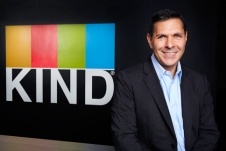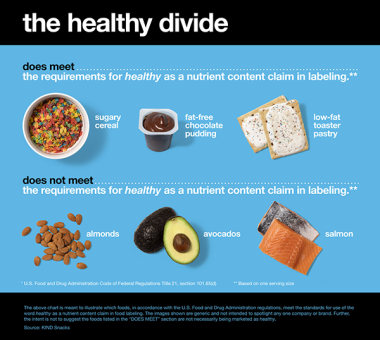For several decades, people have watched Super Bowl commercials almost as eagerly as they have watched the game itself. With the money now involved, $5 million for a 30-second spot, brands are even more committed to raise their creative efforts and capture the attention of both consumers and all the journalists covering this phenomenon.
It’s certainly a lot easier in the age of the Internet to spend time watching and dissecting the 60 or so ads that aired during the game. If you want to take a look at one ‘score’ of the ads to compare against your own impressions, check out the USA Today Ad Meter results that rank viewer submissions on each and every ad.
In the meantime, here are a few thoughts on how the 2016 crop of commercials reflects lessons on how to utilize advertising to create a real brand impact.
To Really Resonate, Combine Emotion and Function
Advertisers have become more and more focused on hitting emotional triggers with their campaigns, and rightly so. There is a danger, however, in creating an emotional message without connecting that impact to the brand.
It’s discouraging when people say, “Oh that ad was great, but, uh, I can’t remember what it was for.” Not surprisingly, ads that scored well in the Ad Meter – which lacks scientific rigor, of course – did a great job utilizing an emotional appeal, usually humor, along with a tie-in to some functional element of the brand.
In pre-watching the ads, the trio of Hyundai ads struck me as hitting this sweet spot perfectly. All three ended up in the top six on the Ad Meter. Granted, some of the stars in the ads prodded their social followers to go to USA Today and vote, but such a push is reflective of the pride these celebrities had in the quality of the ad.
Celebrities Need Quality
Speaking of celebrities, it’s no surprise that lots of them popped up in Super Bowl 50 ads – a famous face reflexively drives mental attention to the screen. But, using such talent can easily be wasted if the messaging and quality of the ad isn’t stellar as well.
Most of the ads did well in delivering on this mix, but one of the worst rated ads was Squarespace’s effort with Jordan Peele and Keegan-Michael Key. While these gents are often hilarious, the characters in the ad weren’t that humorous, likeable, or understandable, so the effort fell flat. In the case of LG’s “The Man From the Future,” the content was just too vague to make much of an impact, and the product, a 4K TV, isn’t ready for prime time as almost no 4K content exists.
Another fascinating celebrity choice was Budweiser’s use of Helen Mirren. There is not a natural brand fit between the two, but for a public service announcement this disconnect was a smart move, helping strengthen attention to its “don’t drink and drive” message. Measuring the true impact of such an effort is difficult, but people seem to have paid attention as a Google Trends search indicates a 500% increase over any peak search for the word pillock over the past decade. (H/t to Frank and Ridley for driving me to research this.)
Beyond Machismo Targeting
In general, Super Bowl commercials are more expansive in their targeting than those running during regular season games. But two ads in particular broke the mold more than others this year.
Hyundai’s “Ryanville” ad was one of the most interesting ads of the batch (to me, anyway) because it specifically targeted women. Even with that target, however, the humor and sense of desire in the ad still maintained a broad appeal, with a relatively similar supportive rating from both men and women in the Ad Meter.
Despite estimates over the past couple of decades that roughly 40-45% of NFL fans are women, it wasn’t until a few years ago that the NFL, and its sponsors and supporters, recognized that they need to expand their messaging beyond just a male target. Still, ads during NFL games have tended to just downplay gender differences, rather than recognizing that an ad can be more appealing to one gender without simultaneously being annoying to the other.
Going even wider in its demographic appeal, Mini Cooper pushed people to defy all labels. Such messages inevitably bring up these labels while also critiquing the use of them, making Mini the brand that would provide a nod to gay culture by featuring Abby Wambach stating, “This is a gay car.”
On a side note, I found it even more interesting that the celebrities in this ad – from Serena Williams to T-Pain to Tony Hawk – are all actual Mini owners who have behind the scenes videos where they talk about their relationship with the brand.
Hits and Misses
Some final fun notes:
- The Heinz Weiner Stampede is currently second in the Ad Meter, but I thought this ad was horrible. Something about image of a “hotdog” liking a face did not sit well with me. What do I know?
- Will pharmaceutical companies ever find a way to make appealing ads?
- I think the Pokemon ad was almost a little ahead of its time. It didn’t score well, and was confusing unless you know about Pokemon, but I loved how it tried to tie traditional sports intensity into the massively growing competitive e-sports category.
- There is always an ad that isn’t well liked, but gets so much attention it has to be called it a success. That title clearly goes to Puppymonkeybaby.
- Don’t try to get across too much or be too obtuse in an ad. Paypal, Quicken Loans, and SoFi,all had confusing messages and lost any appeal.
On a final note, I had fun discovering The Late Late Show’s “update” of Cindy Crawford’s famous 1992 Pepsi commercial that helped stoke the fire behind the desire to write articles like this one.
BY MATTHEW QUINT



 It turns out that Nvidia has become a strong player in the automotive area by developing
It turns out that Nvidia has become a strong player in the automotive area by developing  At the Panasonic press conference, I got to see the mayor of Denver, Michael Hancock, take the stage with Panasonic N.A. Chairman and CEO Joe Taylor to talk about their smart city initiative. Ford announced its efforts with Amazon to integrate the Echo system into future smart vehicles. Google appeared on stage at the LG press conference to highlight their partnership to develop more secure smart things. And Samsung had Microsoft’s Bryan Roper demonstrate natural language queries on Windows 10 that will drive their smart devices.
At the Panasonic press conference, I got to see the mayor of Denver, Michael Hancock, take the stage with Panasonic N.A. Chairman and CEO Joe Taylor to talk about their smart city initiative. Ford announced its efforts with Amazon to integrate the Echo system into future smart vehicles. Google appeared on stage at the LG press conference to highlight their partnership to develop more secure smart things. And Samsung had Microsoft’s Bryan Roper demonstrate natural language queries on Windows 10 that will drive their smart devices.







